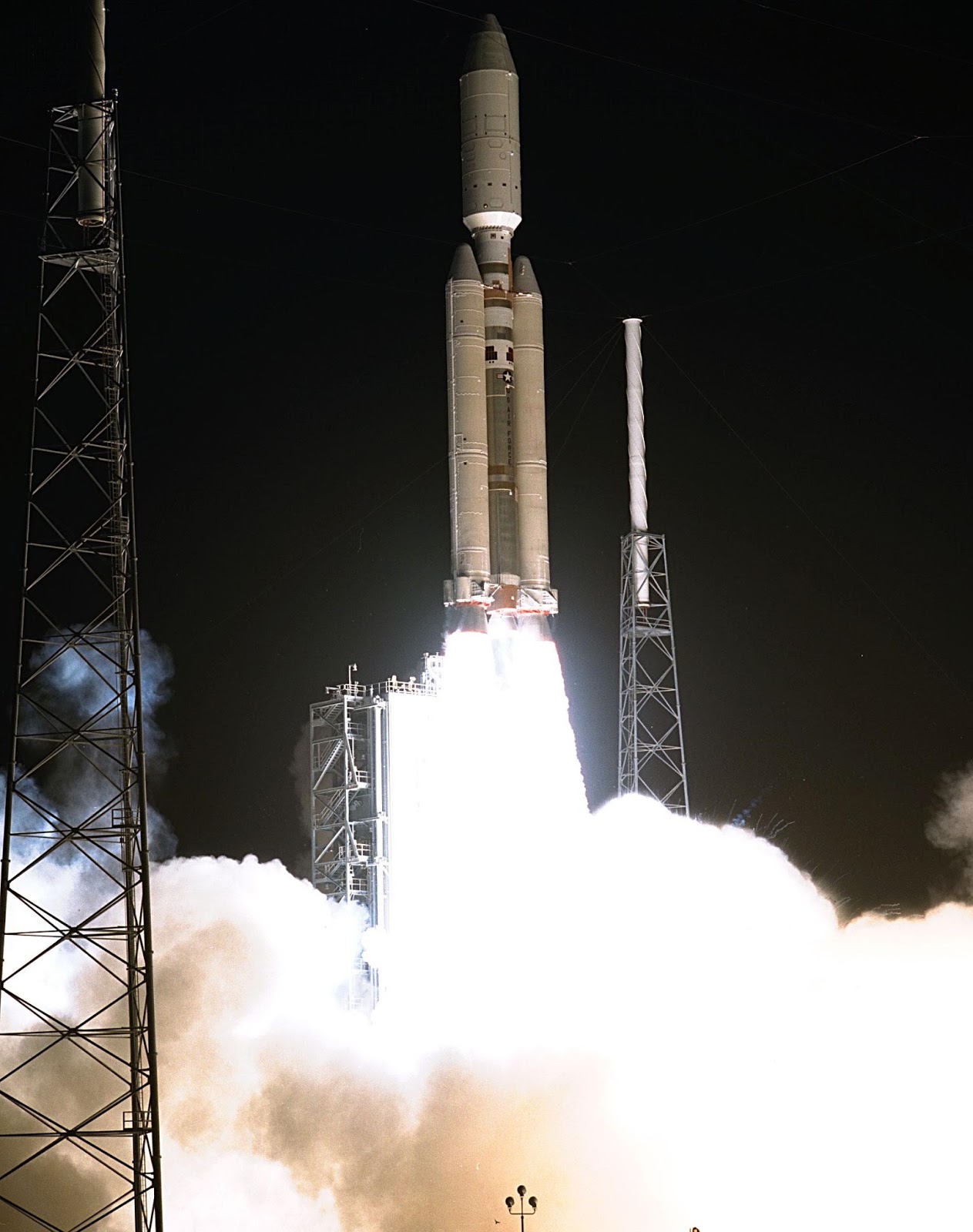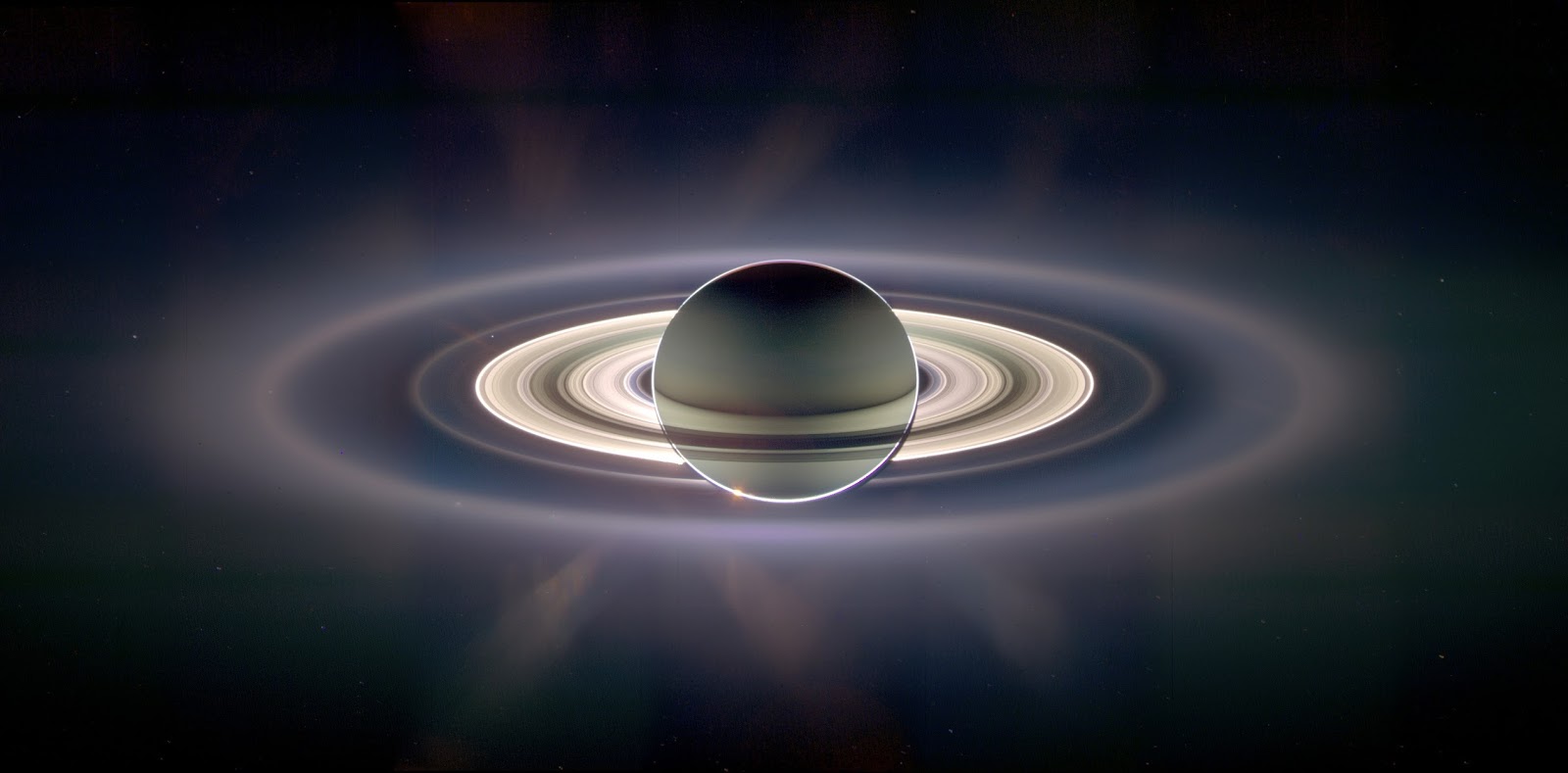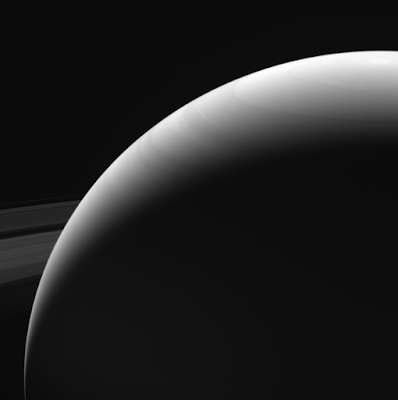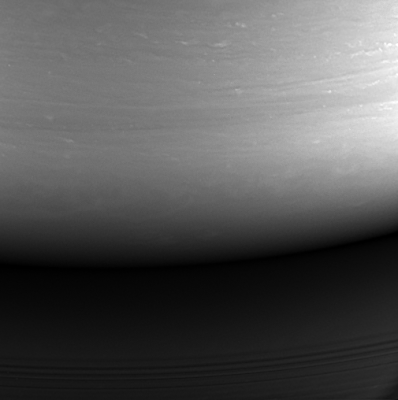The world is livin’ in its dream
But now we know that we can wake up from this sleep
And set out on the journey
Find a ship to take us on the way.”
In the early morning hours of September 15, as I awoke and readied for work, Cassini started its final plunge into Saturn, its home of 13 years. Launched in October 1997 from a Titan IV-Centaur launch vehicle, the spacecraft had spent its last few months conducting “dives” into the unexplored region between the gas giant and its signature rings. But alas, 20 years dissipated into a matter of seconds, and at 7:55 a.m. EDT JPL received the last signals from the minivan-sized spacecraft, just before it turned into a meteor among the high clouds of Saturn. By that time, I was clocking into work during a challenging week; my job had been relocated across town due to Hurricane Irma damage. Still, as I checked out the Cassini updates on social media, I found myself welling up with tears. Why?
This was hardly the first time the ending of an uncrewed spacecraft’s mission had resultedin a flood of tears and mixed emotions from its supporters, followers, and even casual fans. In April 2015, NASA’s Messenger probe finalized its sojourn in space somewhere upon the surface of Mercury, which had been little-explored prior to its mission. Space fans mourned the end of the probe that had orbited the challenging little planet that is closest to our Sun.
Late last year, ESA’s Rosetta mission came to a close upon the surface of comet 67P/Churyumov–Gerasimenko; its plucky lander, Philae, had sacrificed its life there two years earlier after completing most of its science package in a less-than-optimal landing site. People identified so much with Rosetta and Philae, partly due to a (frankly adorable) cartoon promoted by ESA which showed the spacecraft and lander, each given human qualities and faces, embarking on their almost-unbelievable explorations of 67P.
As far back as 1971, one lunar rover’s science and operations team as far away as the Soviet Union quietly mourned the end of their pioneering mission, as Lunokhod 1 entered lunar night and, in the words of space historian Jay Gallentine, “numbly succumbed and slowly froze in place”:
On the next lunar dawn they tried calling and got no answer. They tried again and then again. Lunokhod had flatlined. Word went out to every scientist on the project, informing them not to bother coming down to Shkolnoye [home of Lunokhod operations]. The crew of Lunokhod, the quick-sharp brainiacs who drove and drove and drove, packed their bags and went home. As eulogized by a wistful Vyacheslav Dovgan, “The operation of the rover on the moon ended in a natural death at a very old age.”
Gallentine added, “And death so came not because their creation had shed its will or courage but because it simply could no longer keep itself warm.” He touchedupon the reason why we cry at the end of robotic missions that we cannot easily witness – these machines aren’t human. Our last earthly view of an unmanned spacecraft is of it leaving the pad surrounded by glorious yellow and orange flames, speeding away on its trajectory to another world in a victorious rumble. The
y are idealized at that point as new and “perfect,” and don’t possess the less savory qualities human explorers can have, such as ego, jealousy, and greed. They don’t come back to Earth actinglike celebrities, demandingridiculously high autograph or speakingfees. As they explore the solar system and its objects, they retain their “will or courage” without the very real shortcomings or disappointments humans can bring (see “Brothers Under The Skin: ‘Island of Clouds’ And The Myth of the Astronaut as Hero,”published in August).
 |
| From ESA: “At 08:43 UT, 15 October 1997, a Titan IV-Centaur rocket was launched from Cape Canaveral carrying the Cassini-Huygens spacecraft.” Photo Credit: NASA |
Robotic explorers’ deaths also seem particularly heroic in that they willfully “plunge” to their deaths, or peter along until they run out of power and/or cease communicating. They aren’t capable of having feelings or reserve about sacrificing their own lives for their journeys, making them uniquely “selfless.”
Then there’s the fact that we tend to give non-living things human characteristics, imposing our hopes and dreams on objects that do not have thoughts or feelings. How many of us have given our cars human names, and collegial “pats” on their hoods or steering wheels? We see untapped promise and potential in things that can bring us closer to our goals, even if they cannot reciprocate in celebrating the achievement.
In keeping with this theme Carl Sagan once wrote, “The unmanned exploration of the solar system initiated by the United States and the Soviet Union is a scientific adventure of historic proportions that will be remembered by our remote descendants after much else of our epoch has long been forgotten – provided that we are not so foolish as to destroy ourselves.” He wrote this years before Cassini-Huygens, Messenger, Rosetta, and a bevy of other deep space probes were even launched; at that time, Europe hadn’t yet embarked upon their own deep space explorations – those wouldn’t begin until Giotto’s famous “night of Halley’s Comet” in 1986. Sagan’s words summed up the hope given to people by these robotic missions, provided our own very human flaws didn’t prevent us from keeping the faith.
Perhaps the way to best chronicle why we struggle with our emotions at the end of unmanned space missions is to go to the people who follow them. The following is a series of responses to the question posed in this article’s title, as relayed to me on Facebook’s Space Hipsters group:
“I can only speak for myself, but when you work on a project like this, it becomes a part of your life, almost like a family member. If you know people on the teams, you feel their triumphs as it works (or fails). The imagery surrounding the Cassini (and Rosetta, etc.) mission, also touches us, and if the spacecraft is the least bit anthropomorphized, that also helps us connect to it. It’s like saying goodbye to a favorite car, I would think.” – Carolyn Collins Petersen
“I think we also anthropomorphize. It’s like how I love my car and will cry when it dies. Will the car care? No, but to me it will. I can’t speak for others but when you spend so much of your time with something it’s hard not to get attached and know its intricacies and when you do that it starts to become a living thing.” – Rebecca Glasser
“It’s a tangible piece of human creativity being sent into the cosmos. We ar
e at an amazing time in human history, and we are still learning how to handle these first time events. We have something made by humans that is now a permanent part of Saturn. Incredible.” – Nathan Funk
“A lot of these people have worked together 20 years on this spending more time together then you do with your families even. Now it’s over and a lot are going to go their separate ways, so it’s understandable how sad that is…” – Brian Macomber
“Rovers seem more like sentient beings. Spacecraft not so much. But if I saw a signal disappear…that would remind me of a heartbeat stopping and it would be hard not to feel sad. I try to focus on all the good and get ready for the next unmanned mission.” – Tess Simpson
“Saturn is so far away but Cassini made it seem close.” – Charles Boyer
“…Maybe it’s the long duration of the mission and the unique beauty and strangeness of the Saturn system. Cassini has spent thirteen years orbiting the planet and has sent back amazing images of Saturn, its rings and moons. It’s been like a long trip to a gorgeous national park, it was a great ride with incredibly scenic views and you just hate to see it end and have go back home.” – Michael Mackowski
“Many of the people on console have gray hair. I’d like to know that story. Growing older with your mission. These missions take decades. The end of your mission seems like forever and then there it is. Just like life.” – Laura Bluhm
“These brave little spacecraft carry our hopes and dreams aloft with them. I think we anthropomorphize them as ‘our children’ in many ways. We bring them into the world and send them on their way. If and when they prosper, we are ‘proud of them’ and we rejoice in whatever influences we as humans have had on their successes. When it’s time to say good-bye, it’s almost like losing a child, or at the very least, a very close friend. That is a very human experience.” – Bruce Moody
“I think for me, Cassini has sent back these stunningly beautiful photos for so long; Cassini served as an extension to my eyes and my vision, allowing me to see what I’d never have been able to see without that extension; helping me to imagine what form life on other worlds would take, just giving all of us so much more to think with. Now that’s gone, and maybe never in my lifetime will I have the opportunity to see something ‘out there’ so hauntingly beautiful again. I think about all the great astronomers and scientists who have lived before our time who would have given anything to see what ordinary people have seen because of Cassini, and I feel humbled and awestruck and sad and proud of our people who made this happen all at the same time.” – Lois Huneycutt
“I think it’s okay to be sad for the loss of a spacecraft. In a perfect world, at the end of its mission, a history-making spacecraft like Cassini would be brought back to Earth to be placed in a museum, where it can inspire future generations of scientists and engineers, as well as provide lessons on the condition of interplanetary craft after 20 years in space. The science that was achieved by Cassini’s grand finale was certainly more important than Cassini’s preservation, but it’s okay to be sad that a great orbiter is now gone.” – Robert Pearlman
“Cassini brought us all such incredible photos! The average person may not care about the science (which was truly incredible!), but looking at all the photos Cassini gave us, [they were] just so beautiful. And it lasted so long, it became a kind of celebrity in its own right. How many memes, and cartoons and articles have we seen over its 20 year mission?
“What happens, I think, is that we all personalize the spacecraft, and then it becomes a friend (if you will). Cassini gave us so much, and for so long, that everybody felt they had a personal connection to this mission. And she dared to do mighty things! She traipsed around the most majestic planetary system in our neighborhood, and she courageously made new, bold discoveries with each orbit! And so now, here we are, Cassini has taken her final plunge into Saturn. And so we truly grieve at her passing, but we delight in her accomplishments.” – Jamie Rich
Sources:
1. Gallentine, J. (2015). Infinity Beckoned: Adventuring Through the Inner Solar System, 1969-1989.Lincoln, NE: University of Nebraska Press.
2. Murray, B. (Ed.). (1983). The Planets: Readings from Scientific American. New York, NY: W.H. Freeman and Company.
Many thanks to the Space Hipsters group for its participation.
Emily Carney is a writer, space enthusiast, and creator of the This Space Available space blog, published since 2010. In January 2019, Emily’s This Space Available blog was incorporated into the National Space Society’s blog. The content of Emily’s blog can be accessed via the This Space Available blog category.
Note: The views expressed in This Space Available are those of the author and should not be considered as representing the positions or views of the National Space Society.





















